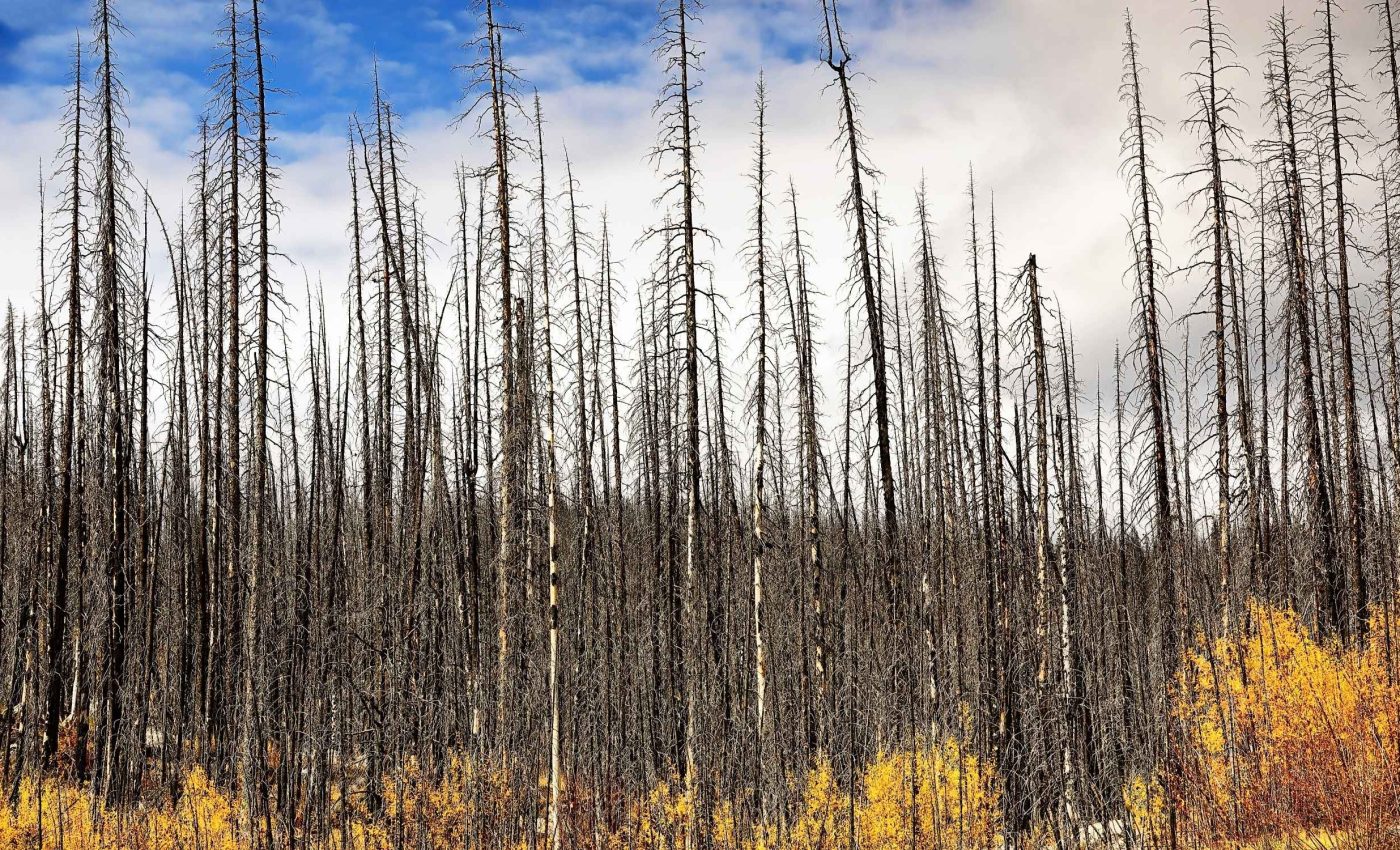
How aspen forests can help stop wildfires in their tracks
Aspen trees, long admired for their beauty, may also be powerful allies in wildfire defense. A new study reveals that aspen forests can slow wildfires or even stop them entirely. The researchers looked at 314 wildfires across the Four Corners region between 2001 and 2020.
The team discovered that even small increases in aspen cover reduced fire spread. Daily fire growth dropped from over 1,100 hectares to just 368 hectares where aspen cover exceeded 25 percent. The research shows how aspen stands can work like natural firebreaks.
Study co-author Camille Stevens-Rumann is an associate professor of forest and rangeland stewardship at Colorado State University.
“Where managers can encourage aspen over conifers, they may represent a more desirable fuel treatment in some forest types than traditional thinning or shaded firebreaks because of the aesthetic value and wildlife habitat aspen provide,” said Stevens-Rumann.
Barriers that stop wildfires
The researchers found that aspen was more abundant at fire edges than in the interior. The pattern suggests aspen helped form fire boundaries. This makes them a natural shield, especially useful for land managers.
“My hope is that this research can help inform fire and fuels management focused on propagation of aspen through prescribed fire. In some settings, aspen might even be planted around communities to form green fuel breaks for fire protection,” noted study lead author Matt Harris, a recent Western Colorado graduate.
The researchers used satellite data to measure daily fire growth. Fire spread slowed as aspen coverage increased, even under extreme conditions like high winds and low humidity.
Why aspen resists wildfires
Aspen trees carry unique traits that help them resist burning. Their leaves and understory hold more moisture. Their branches stay high, making crown fires less likely. And their chemical makeup makes them less flammable than conifers.
Daily fire spread dropped from over 2000 meters to under 1350 meters when aspen cover passed 25%. That’s a sharp decline with important implications.
The researchers also found that aspen’s effectiveness did not vary much with weather. While climate factors did affect total fire spread, they didn’t change aspen’s relative performance against conifers.
Aspen in the late fire season
One pattern did emerge with timing. Aspen tended to be more effective wildfire stoppers later in the season. In early spring, fires could still move through before the leaves fully emerged.
During summer, when aspen foliage reaches peak moisture, the trees became more effective buffers. Still, this trend was mild and not uniform across all fires.
The study supports using aspen in green fuel breaks. These natural buffers could slow fire in forest landscapes while offering habitat and scenic value.
“This research is a direct result of long-term federal investment in understanding wildfire and forest dynamics,” noted study co-author Jonathan Coop.
“The wildfire challenges we face in the western U.S. continue to grow every year, and we require good science to inform solutions to protect communities and sustain the ecosystem functions we depend on, from water to timber.”
Aspen forests boost wildfire resistance
Aspen spreads quickly after disturbance. It regenerates through root suckers, seeds, and sprouts on bare ground. As fire activity increases due to climate change, aspen may expand naturally in some places.
However, that is not guaranteed. Land use, fire suppression, and conifer growth have reduced aspen in many areas. Interventions like prescribed fire or planting may help restore it.
Aspen forests also bring more than fire resistance. They boost soil moisture and provide habitats for birds and mammals. They offer high aesthetic and ecological value, making them ideal for landscape-scale planning.
Fire managers might now see aspen as more than just a background species. In fire-prone areas, these trees can help slow or stop wildfires. While more research is needed to investigate the costs and effectiveness, this study makes a clear case.
Aspen forests may not replace traditional fire treatments, but they offer a natural option that blends beauty, biodiversity, and fire resistance. In a drier, hotter future, that combination could become invaluable.
The study is published in the journal Ecological Applications.
—–
Like what you read? Subscribe to our newsletter for engaging articles, exclusive content, and the latest updates.
Check us out on EarthSnap, a free app brought to you by Eric Ralls and Earth.com.
—–













